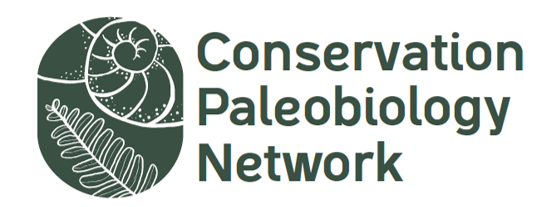Name: Broc Kokesh
Pronouns: He/Him/His
Links: twitter.com/brockokesh
Contact Me: bkokesh@uchicago.edu
Position: Graduate Student, Department of Geophysical Sciences, University of Chicago
Education: BA in Geology and Biology, University of Minnesota Morris; MSc in Paleontology, South Dakota School of Mines and Technology
How I Got Here: I started university pursuing Environmental Science, but quickly decided to double major in Biology and Geology after my first intro-level courses in each. Paleontology appealed to me as the ideal intersection between my two fields of study, so I pursued undergraduate research funds to study Devonian brachiopods, took a field course based in the Hell Creek of Montana, and elected to pursue a masters degree to dive into the field before doing a PhD (a move I can’t recommend enough). For my masters thesis, I studied geometric morphometrics of chemosymbiotic bivalve populations from Bahamian lakes, comparing live and dead shells. This project introduced me to taphonomy and conservation paleobiology, which I was excited to make the focus of my doctoral studies.
What I Do: My research is broadly motivated by a single overarching question: How does the fossil record translate into biological communities? Fossil assemblages are very different datasets from surveys of a living community due to preservational limitations (only hardpart-bearing taxa are usually preserved) and a myriad of taphonomic processes (time-averaging, post-mortem loss, etc.). Thus, I’m interested in gauging the comparability between paleoecological and modern ecological data to better reconstruct ecosystems from the distant and recent past. Some of the kinds of questions I investigate include:
- Does the diversity/composition/functional richness of hardpart-bearing taxa (e.g., bivalves) mirror that found in soft-bodied taxa (e.g., polychaetes) and the whole fauna?
- How do death assemblages remember/detect ecological shifts (introduction of invasive species, etc.)?
- How do biological and environmental variability in the living community impact death assemblage structure and composition?
- How do carbonate loss rates – via disintegration and burial – shape death assemblages and down-core fossil assemblages on local and global scales?
What Data I Use: I primarily work with molluscan death assemblages collected by environmental monitoring agencies. These agencies, such as local wastewater districts and regulation departments, often discard the “grunge” of dead shells and sediment after picking out the living organisms. By asking them to save their waste for rescue, I effectively dumpster-dive for my samples! Further, these agencies also have years if not decades of live community time series data, which I greatly value as single sampling events mask the true variation and structure that underpins a community. Because agency datasets also include a broad range of soft-bodied taxa, I use these datasets to test how the entire benthic macrofauna compares to preservable subsets (e.g., the living bivalves) and subsequently to the death assemblage. Currently, I work with agency scientists from Los Angeles County in southern California and the Puget Sound region of Washington State.
A Typical Day: Most of my working hours are spent performing two tasks: sorting death assemblages and writing code. For the prior, my agency collaborators send me their post-processed debris from the field season and I spend time under the microscope picking out identifiable shells. At the same time, I inspect individual shells for evidence of damage (fracture, bioerosion, etc.) and record their frequencies in each species. For the latter, agency databases with decades of data are computationally demanding files (some with over 1 million rows!). Because I make use of all of these data in some way and agencies tend to record their data in different formats, I write scripts that can iteratively extract data subsets to lighten the burden. By front-loading my projects with this effort, subsequent analyses are streamlined and easy to run! Fortunately, COVID-19 has not disturbed my workflow this past year and I’m hoping to get out into the field soon.
Role with CPN: I serve on the CPN’s Student Panel and act as the Student Representative for the Annual Meeting Panel. I encourage folks to reach out to me with any questions or ideas you have regarding conference planning and student-oriented activities!
My Advice to Aspiring Scientists: Always let the question that inspires you drive your work. Everything else (methods, field sites, study systems, etc.) are then simply those that best help answer your question. Revisit your motivating questions often and update them as you grow.

